
Raphael - The School of Athens
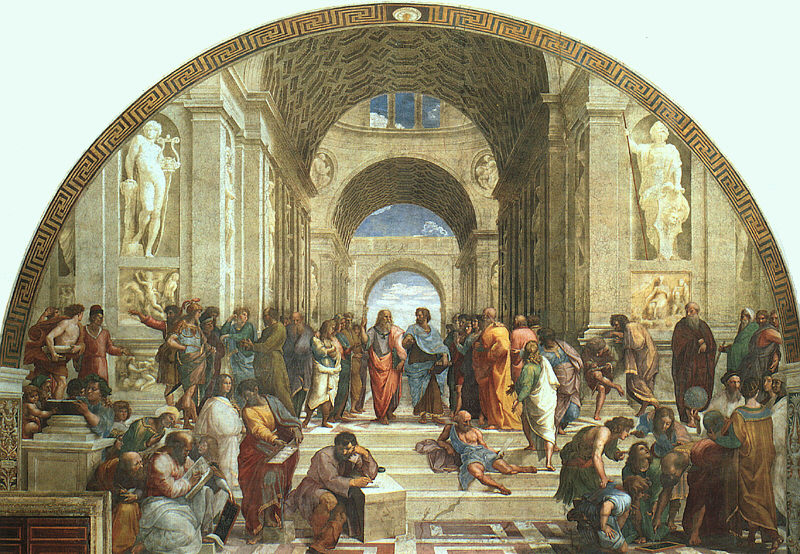
The School of Athens is a fresco painted by Italian Renaissance artist Raphael between 1509 and 1511. The fresco depicts a congregation of ancient philosophers, mathematicians, and scientists, with the two great philosophers from antiquity, Plato and Aristotle, featured prominently in the center. It is considered one of the masterpieces of the Italian Renaissance and a symbol of the marriage of art, philosophy, and science. In the fresco, Plato is depicted pointing skyward while holding a copy of Timaeus, and Aristotle gestures to the ground with a copy of his Ethics.
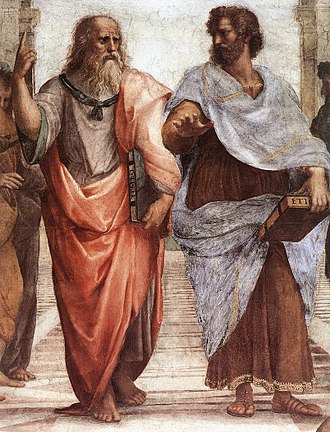
Plato indicates by his upward gesture that his Theory of Forms, the timelessness of ideal categories,
is the central aspect of his philosophy. The forms are the absolute, universal truth and are obtainable through the
rational examination of ideas. Truth, for example, exists as a form, and in its true form, it is true for everyone
(as opposed to a relative, subjective truth, which is only true for the individual who experiences it). Plato's famous allegory of the
cave illustrates this idea.
On the other hand, Aristotle, gesturing downwards, indicates his emphasis on concrete particulars,
the phyiscal reality of life and nature.
There is no reason to transcend the world before we come to understand the world, our place in the world,
and how to ethically engage with the world.
These two Ancient Greek philosophies, idealism and realism, have determined the development of Western philosophy since then and
are still relevant today.
Salvador Dali - The Persistence of Memory
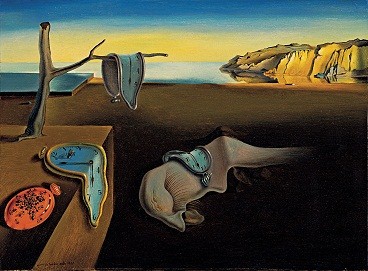
"The Persistence of Memory" is a 1931 painting by Salvador Dali, one of the most recognizable works of Surrealism. It features melting clocks and a desolate landscape, reflecting Dali’s interest in quantum physics and the concept of time. The melting clocks, which are often seen as symbols of the fluidity and relativity of time, challenge the conventional understanding of time's rigidity and order. The painting's title, "The Persistence of Memory," hints at the enduring nature of memory and its role in shaping our perception of time and reality. This theme is further emphasized by the stillness and eerie calm of the landscape, which contrasts with the dynamic and fluid nature of the melting clocks. In summary, the painting invites the viewer to question the nature of time, reality and the human experience.
René Magritte - Ceci n'est pas une pipe
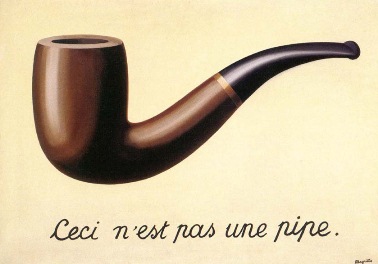
René Magritte's painting "Ceci n'est pas une pipe" (This Is Not a Pipe) is a famous surrealist work that challenges the relationship between words and images. The painting, also known as "The Treachery of Images," features a realistic image of a pipe with the French phrase "Ceci n'est pas une pipe" written below it, questioning the viewer's perception of reality and the connection between an object's representation and its actual existence. Magritte’s philosophy behind the painting was the image being different than the object: The image is symbolic of the object. Magritte is questioning the terms of reality that are often taken for granted - a picture of a thing is not that thing.
Caspar David Friedrich - Der Mönch am Meer
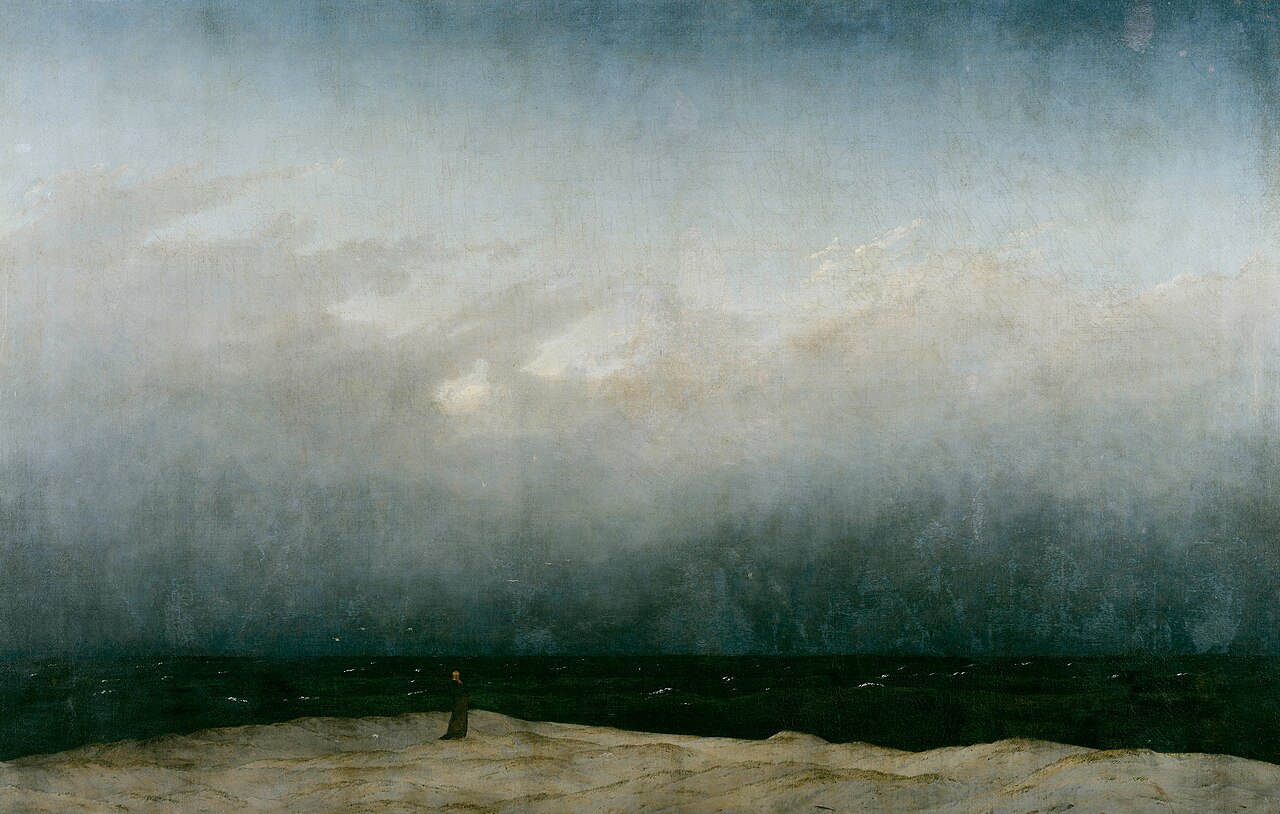
Caspar David Friedrich's "Monk by the Sea" (1808–10) is a painting that embodies the philosophical and spiritual themes central to Romanticism. The painting features a lone monk standing on a beach, gazing out at a vast sea and sky, which symbolize the overwhelming presence of nature and the divine. The monk's contemplative pose suggests a deep connection with the natural world and a sense of existential reflection, highlighting the individual's insignificance in the face of nature's vastness and the sublime. The low horizon line and the expansive sky create a sense of isolation and contemplation, emphasizing the figure's smallness and the vastness of the natural world. It can be interpreted as a metaphor for the human quest for spiritual understanding and the search for meaning in the face of the unknown. Friedrich's work reflects a Romantic longing for a deeper connection with nature and a questioning of humanity's place in the world. In summary, "Monk by the Sea" is a profound exploration of the human condition, nature, and spirituality, inviting viewers to reflect on their own place in the universe and the vastness of the natural and divine realms.
M.C. Escher - Print Gallery
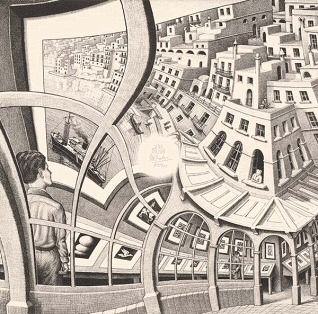
M.C. Escher's work, including his painting "Print Gallery," contains philosophical and literary themes that reflect his musings on reality and human experience. The central void in "Print Gallery" could be seen as representing the absence of a definitive answer to the questions of existence, suggesting a paradoxical nature where there is both too much and too little to know for certain about reality. Escher's use of the Droste effect, an infinite repetition achieved through dilating, iterating, and splitting images, complements the cyclical quality of reality and the abstract concept of perception. Escher's work often explores the relationship between reality and perception, and his intricate designs can be interpreted as visual representations of philosophical concepts. For instance, his use of impossible constructions and tessellations can be seen as a commentary on the nature of existence and the limits of human understanding.
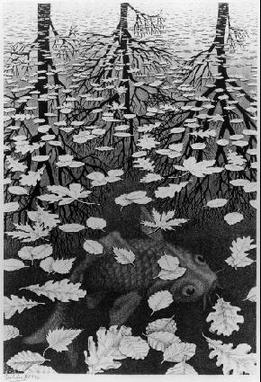
The lithograph "Three Worlds," created in 1955, is often interpreted philosophically as a representation of different aspects of reality. The artwork depicts a large pool or lake during autumn or winter months, featuring three visible perspectives: the surface of the water with floating leaves, the world above the surface reflected in the forest, and the world below the surface with large fish swimming. The print can be seen as a metaphor for the three stages of life: the fish underwater symbolizing the living time, the leaves on the surface representing loss or aging, and the leafless trees symbolizing death or disappearance. A Platonic interpretation would represent the trees with the branches as the mirrored temporal manifestations of the ideal forms. The leaves on the surface of the lake represent the world of causality and relationship of things. Finally, the fish immersed in the depths of the lake represents the human mind immersed in a world of causally interrelated things that are not real but only reflections of the ultimate reality in which they particpate.
Vasily Kandinsky - Several Circles (Einige Kreise)
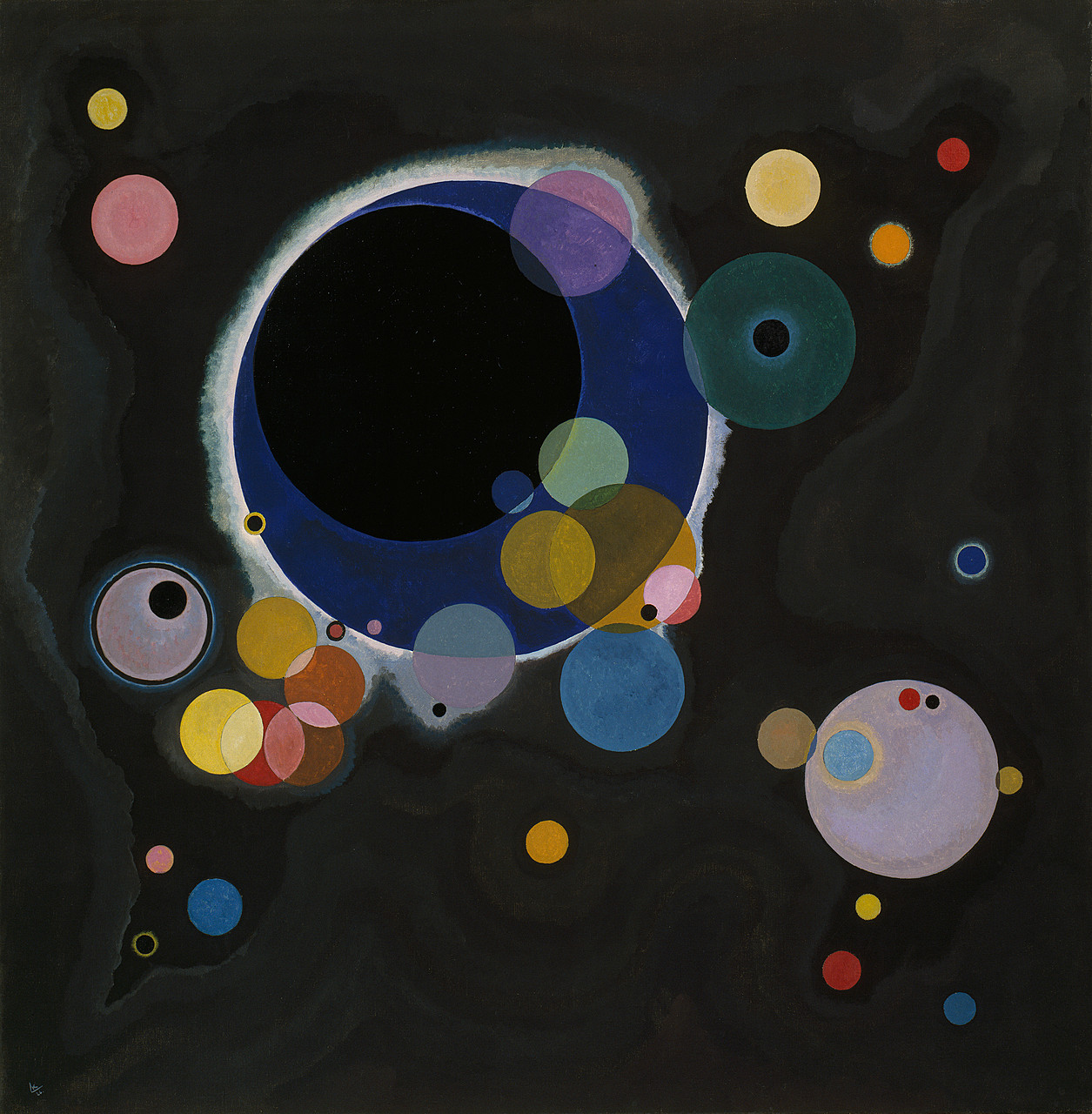
Kandinsky believed that art should not imitate nature or depict the visible world but reveal the invisible truths
of the psyche and cosmos. Thus, painting becomes a form of metaphysical communication, like music.
The circle is static but dynamic, closed yet infinite.
It suggests a center, something complete and self-contained, like unity of the self or the whole cosmos. It's a symbol
of harmony, cosmic unity and the reconciliation of inner and outer worlds.
In Several Circles, Kandinsky uses pure circles floating in a dark field. There are no recognizable
objects—only form and color as direct expressions of spiritual order. The background resembles the void or infinite
space. The composition has no gravity - everything floats - suggesting a universe freed from material constraints.
Kandinsky's philosophy in Several Circles is that art should reveal the unseen spiritual order of the universe
by using pure forms — especially the circle — as symbols of harmony, infinity, and the inner life of consciousness.
"The circle," claimed Kandinsky, “is the synthesis of the greatest oppositions. It combines the concentric and the eccentric in a single form and in equilibrium. Of the three primary forms, it points most clearly to the fourth dimension."